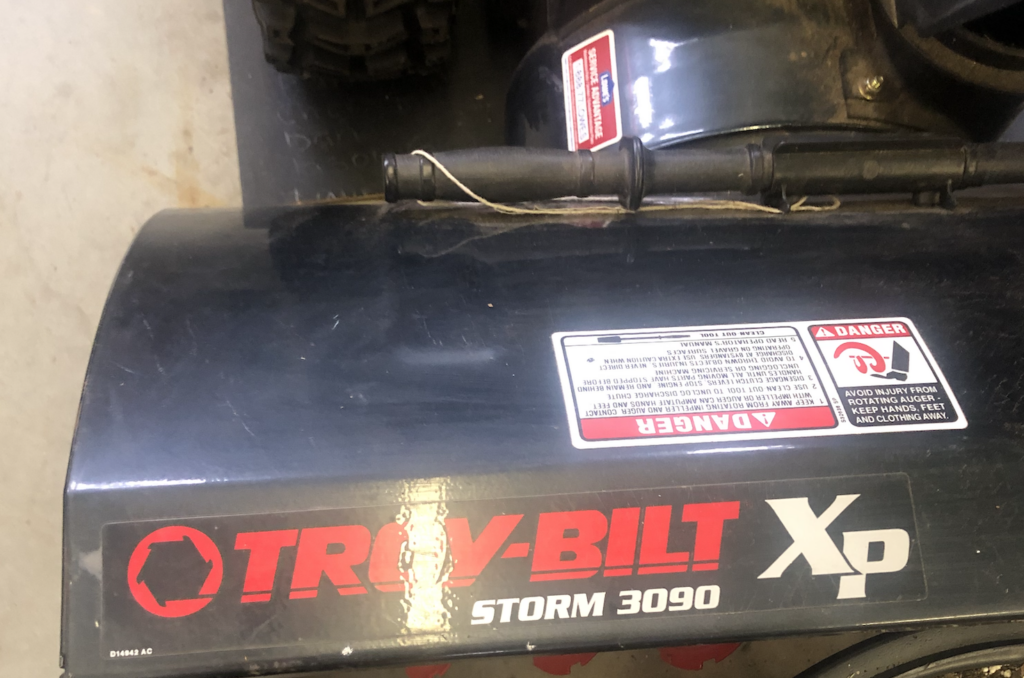Winter can be a challenging season, and when the first snowfall hits, you want to be prepared. If you own a Troy-Bilt snow blower, you know that it’s a reliable machine that can make clearing snow a breeze. However, there may come a time when your snow blower refuses to start, leaving you stranded in a sea of snow.
Don’t worry; in this article, we’ll discuss the four most likely problems that can prevent your Troy-Bilt snow blower from starting and provide you with the necessary fixes to get it up and running again.
Understanding the Basics of Troy-Bilt Snow Blower Operation
Before we delve into the specific problems and their solutions, it’s important to have a basic understanding of how a Troy-Bilt snow blower operates. This knowledge will help you troubleshoot any issues that may arise. A Troy-Bilt snow blower consists of several key components that work together to clear snow effectively.
When it comes to clearing snow, a Troy-Bilt snow blower is a reliable and efficient machine. It is designed to tackle even the heaviest snowfalls with ease. The key to its effectiveness lies in its well-designed and well-maintained components.
Key Components of Your Snow Blower
The key components of a Troy-Bilt snow blower include the engine, ignition system, fuel system, spark plug, and carburetor. Each of these components plays a vital role in ensuring your snow blower starts and operates smoothly.
The engine is the heart of your snow blower. It provides the power needed to drive the auger and throw the snow. It is important to keep the engine well-maintained and in good working condition to ensure optimal performance.
The ignition system is responsible for igniting the fuel-air mixture in the engine’s combustion chamber. It consists of various components, such as the ignition coil and spark plug wire, that work together to generate a spark and ignite the fuel. Without a properly functioning ignition system, your snow blower may fail to start or run poorly.
The fuel system is responsible for delivering fuel to the engine. It consists of a fuel tank, fuel lines, and a carburetor. The carburetor is a crucial component that mixes the fuel with air in the correct ratio before it enters the engine. A clogged or malfunctioning carburetor can cause starting problems and poor performance.
The spark plug is another important component of your snow blower. It creates the spark needed to ignite the fuel-air mixture in the engine’s combustion chamber. A worn or dirty spark plug can cause starting issues and reduced engine performance.

Importance of Regular Maintenance
Regular maintenance is crucial to keeping your Troy-Bilt snow blower running smoothly and preventing any starting issues. Ensuring that you follow the manufacturer’s maintenance schedule will help prevent problems and prolong the life of your machine.
One of the most important maintenance tasks is changing the oil regularly. The oil lubricates the engine and helps to keep it running smoothly. Over time, the oil can become dirty and lose its effectiveness. Regular oil changes will help to ensure that your snow blower operates at its best.
In addition to oil changes, it is important to check and clean the spark plug regularly. A dirty or worn spark plug can cause starting issues and reduced engine performance. Cleaning or replacing the spark plug as needed will help to maintain optimal performance.
Another important maintenance task is checking and adjusting the carburetor. The carburetor is responsible for mixing the fuel with air in the correct ratio. If it becomes clogged or out of adjustment, it can cause starting problems and poor performance. Regularly inspecting and cleaning the carburetor will help to ensure that your snow blower operates smoothly.
Lastly, don’t forget to check and replace the air filter as needed. The air filter prevents dirt and debris from entering the engine and can become clogged over time. A dirty air filter can restrict airflow and cause starting issues and reduced engine performance. Regularly inspecting and replacing the air filter will help to maintain optimal performance.
Problem 1: Ignition Issues
One of the most common problems that can prevent your Troy-Bilt snow blower from starting is ignition issues. Let’s take a closer look at how to identify and fix these problems.
Identifying Ignition Problems
If you try starting your snow blower and hear a clicking sound or nothing happens at all, it’s likely that you’re facing ignition problems. Faulty wiring, a worn-out ignition switch, or a dead battery can be the culprits.
When it comes to faulty wiring, there are a few things to look out for. Inspect the wires for any signs of damage, such as fraying or exposed wires. Corrosion can also be a common issue, especially if your snow blower has been exposed to moisture. Check the wiring connections to ensure they are secure and free from any corrosion. If you notice any issues, it’s important to address them promptly to prevent further damage.
In some cases, the ignition switch itself may be the problem. Over time, the switch can wear out or become damaged, leading to difficulties starting the snow blower. To test the ignition switch, you can use a multimeter. This device will help you determine if the switch is functioning properly or if it needs to be replaced. If the switch is indeed faulty, it’s recommended to replace it with a new one to ensure reliable ignition.
Another potential culprit for ignition issues is a dead or weak battery. If your snow blower has been sitting idle for an extended period, the battery may have lost its charge. Before assuming the worst, check the battery’s charge level. If it’s low, try charging it fully and see if that resolves the problem. However, if the battery is old or damaged, it may be necessary to replace it with a new one to ensure optimal performance.
Steps to Fix Ignition Issues
To fix ignition issues, start by checking the wiring connections. Make sure they are secure and free from corrosion. If the wiring appears to be in good condition, test the ignition switch using a multimeter. If the switch is faulty, replace it with a new one. Additionally, make sure the battery is fully charged or consider replacing it if necessary.
By addressing these common ignition issues, you can ensure that your Troy-Bilt snow blower starts reliably, allowing you to tackle the winter weather with ease.
Problem 2: Fuel System Complications
The fuel system in your Troy-Bilt snow blower can also cause starting issues. Here’s what you need to know about recognizing and solving fuel system problems.
The fuel system is a crucial component of your snow blower, responsible for delivering the necessary fuel to the engine for combustion. However, like any mechanical system, it can encounter complications that hinder its performance.
Recognizing Fuel System Problems
If your snow blower doesn’t start or sputters and dies shortly after starting, there could be an issue with the fuel system. Common fuel system problems include a clogged fuel filter or a faulty fuel line.
A clogged fuel filter can restrict the flow of fuel to the engine, leading to inadequate combustion and poor performance. On the other hand, a faulty fuel line can result in fuel leakage, disrupting the fuel supply and causing starting issues.
Solutions for Fuel System Complications
To address fuel system complications, start by checking the fuel filter. It is usually located between the fuel tank and the carburetor. If it’s clogged, replace it with a new one. A clean fuel filter ensures that only clean fuel reaches the engine, optimizing its performance.
Additionally, inspect the fuel line for any cracks or leaks. Over time, the fuel line can deteriorate due to exposure to harsh weather conditions or general wear and tear. If you find any issues, replace the fuel line to ensure proper fuel flow. A secure and intact fuel line guarantees a steady supply of fuel to the engine, enhancing its starting reliability.
Furthermore, it is essential to regularly maintain the fuel system by using clean and high-quality fuel. Contaminated or stale fuel can lead to fuel system complications, so it’s crucial to use fresh fuel and properly store it when not in use.
Moreover, consider using a fuel stabilizer, especially during the off-season, to prevent fuel degradation and the formation of deposits in the fuel system. This simple step can significantly reduce the likelihood of fuel system complications and ensure smooth starting when you need to use your snow blower.
Remember, a well-maintained fuel system is vital for the overall performance and longevity of your Troy-Bilt snow blower. By recognizing and addressing fuel system problems promptly, you can keep your snow blower running efficiently, even in the harshest winter conditions.
Problem 3: Spark Plug Failures
A spark plug failure can also prevent your Troy-Bilt snow blower from starting. Let’s explore how to detect and correct spark plug failures.
Detecting Spark Plug Failures
If your snow blower struggles to start or you notice a lack of power during operation, a faulty spark plug could be to blame. This can be caused by a worn-out electrode or a buildup of carbon deposits.
How to Correct Spark Plug Failures
To fix spark plug failures, start by removing the spark plug from the engine. Inspect the electrode for wear or damage. If necessary, replace the spark plug with a new one. Additionally, clean any carbon deposits using a wire brush or a specialized spark plug cleaner.
Problem 4: Carburetor Blockages
A blocked carburetor can be another reason why your Troy-Bilt snow blower won’t start. Let’s examine the signs of a blocked carburetor and how to clear it.
Signs of a Blocked Carburetor
If your snow blower struggles to start, runs rough, or stalls during operation, it’s possible that the carburetor is clogged. A clogged carburetor can occur when debris or old fuel accumulates in the fuel passages over time.
Clearing a Blocked Carburetor
To clear a blocked carburetor, start by removing the carburetor from the engine. Carefully disassemble it and clean all the components using carburetor cleaner. Pay close attention to the fuel passages and jets. Once clean, reassemble the carburetor and reinstall it in your snow blower.
By understanding the basics of Troy-Bilt snow blower operation and troubleshooting the most common starting issues, you can save yourself time, money, and frustration. Remember to perform regular maintenance and address any problems promptly to ensure your snow blower is always ready to tackle the next snowfall. Stay prepared and enjoy hassle-free snow clearing with your Troy-Bilt snow blower!

